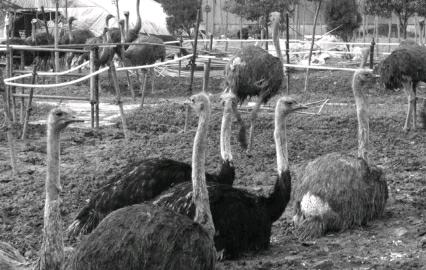Do ostriches really bury their heads in the sand?
2015-10-12
“不要学鸵鸟,一遇到危险就把头埋在沙子里。”这句警语真的对吗?鸵鸟真的是因为害怕才把头埋在沙子里的吗?看起来动物学家不认可这个观点呢。一起来看看真相吧。
When frightened, ostriches instinctively bury their heads in the sand in the hopes that trouble will pass them by — or so the legend goes. In reality, ostriches dont bury their heads in the sand to avoid danger. Not only would they be unable to breathe, but when you think about it, they really have no reason to do so.
Ostriches are the fastest animals on two legs, capable of running as fast as 40 miles per hour for a brief period if they have to outrun trouble. Endurance isnt an issue either for these birds — they can sprint at a brisk 30 miles per hour for a full 10 miles straight if needed.
If this impressive speed isnt enough, ostriches have plenty of other defenses. They stand around 9 feet tall and weigh in at a whopping 350 pounds. If threatened, they can deliver a kick powerful enough to kill a lion.
So where did the myth that they bury their heads in the sand originate? Call it good parenting.
They bury the eggs safely in the ground. A few times a day, the ostrich parents dip their heads below the ground to gently turn the eggs using their beaks. This relatively brief head-duck may have given rise to the head-burying myth.
The legend could also be attributed to the fact that a nesting ostrich who senses danger may flop down with his head and neck flat against the ground in hopes that potential predators wont spot him. In this position, he can potentially blend into the terrain, though his head never actually goes underground.
